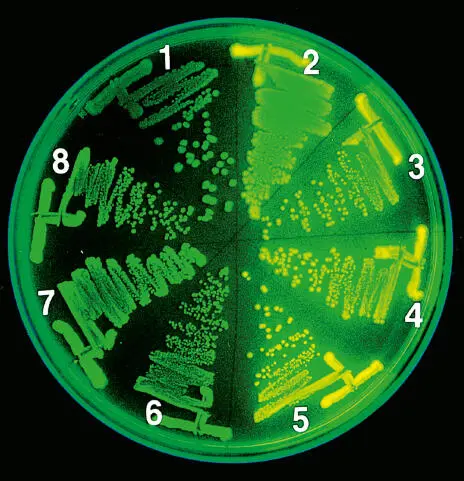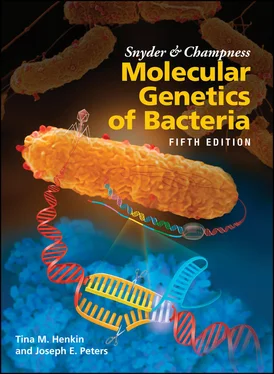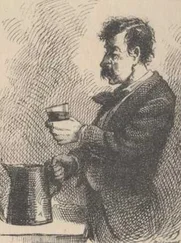35 Rudolph CJ, Upton AL, Stockum A, Nieduszynski CA, Lloyd RG. 2013. Avoiding chromosome pathology when replication forks collide. Nature 500:608–611.
36 Sambrook J, Russell D. 2006. The Condensed Protocols from Molecular Cloning: a Laboratory Manual. Cold Spring Harbor Laboratory Press, Cold Spring Harbor, NY.
37 Sanders GM, Dallmann HG, McHenry CS. 2010. Reconstitution of the B. subtilis replisome with 13 proteins including two distinct replicases. Mol Cell 37:273–281.
38 Shih Y-L, Rothfield L. 2006. The bacterial cytoskeleton. Microbiol Mol Biol Rev 70: 729–754.
39 Singleton MR, Dillingham MS, Wigley DB. 2007. Structure and mechanism of helicases and nucleic acid translocases. Annu Rev Biochem 76:23–50.
40 Slater S, Wold S, Lu M, Boye E, Skarstad K, Kleckner N. 1995. E. coli SeqA protein binds oriC in two different methyl-modulated reactions appropriate to its roles in DNA replication initiation and origin sequestration. Cell 82:927–936.
41 Thanbichler M. 2009. Closing the ring: a new twist to bacterial chromosome condensation. Cell 137:598–600.
42 Thanbichler M, Shapiro L. 2006. MipZ, a spatial regulator coordinating chromosome segregation with cell division in Caulobacter. Cell 126:147–162.
43 Valens M, Penaud S, Rossignol M, Cornet F, Boccard F. 2004. Macrodomain organization of the Escherichia coli chromosome. EMBO J 23:4330–4341.
44 Valens M, Thiel A, Boccard F. 2016. The MaoP/maoS site-specific system organizes the Ori region of the E. coli chromosome into a macrodomain. PLoS Genet 12:e1006309.
45 Vecchiarelli AG, Li M, Mizuuchi M, Hwang LC, Seol Y, Neuman KC, Mizuuchi K. 2016. Membrane-bound MinDE complex acts as a toggle switch that drives Min oscillation coupled to cytoplasmic depletion of MinD. Proc Natl Acad Sci USA 113:E1479-E1488.
46 Viollier PH, Thanbichler M, McGrath PT, West L, Meewan M, McAdams HH, Shapiro L. 2004. Rapid and sequential movement of individual chromosomal loci to specific subcellular locations during bacterial DNA replication. Proc Natl Acad Sci USA 101:9257–9262.
47 Wang JC. 1996. DNA topoisomerases. Annu Rev Biochem 65:635–692.
48 Watson JD. 1968. The Double Helix. Atheneum, New York, NY.
49 Watson JD, Crick FHC. 1953. Molecular structure of nucleic acids; a structure for deoxyribose nucleic acid. Nature 171:737–738.
50 Windgassen TA, Leroux M, Satyshur KA, Sandler SJ, Keck JL. 2018. Structure-specific DNA replication fork recogntion directs helicase and replication restart activities of the Escherichia coli PriA helicase. Proc Natl Acad Sci USA 115:E9075-E9084.
51 Wu LJ, Ishikawa S, Kawai Y, Oshima T, Ogasawara N, Errington J. 2009. Noc protein binds to specific DNA sequences to coordinate cell division with chromosome segregation. EMBO J 28:1940–1952.
52 Yamaichi Y, Niki H. 2004. migS, a cis-acting site that affects bipolar positioning of oriC on the Escherichia coli chromosome. EMBO J 23:221–233.
2 Bacterial Gene Expression: Transcription, Translation, Protein Folding, and Localization
1 Overview
2 The Structure and Function of RNA Types of RNA RNA Precursors RNA Structure RNA Processing and Modification
3 Transcription Structure of Bacterial RNA Polymerase Overview of Transcription Details of Transcription rRNAs and tRNAs
4 RNA Degradation RNases
5 The Structure and Function of Proteins Protein Structure
6 Translation Structure of the Bacterial Ribosome Overview of Translation Details of Protein Synthesis The Genetic Code Polycistronic mRNA
7 Protein Folding and Degradation Protein Chaperones Protein Degradation
8 Protein Localization The Translocase System The Signal Sequence The Targeting Factors The Tat Secretion Pathway Disulfide Bonds
9 Protein Secretion and Export Protein Secretion Systems in Bacteria with an Outer Membrane Protein Secretion in Bacteria That Lack an Outer Membrane Sortases
10 Regulation of Gene Expression Transcriptional Regulation Posttranscriptional Regulation
11 What You Need To Know Open Reading Frames Transcriptional and Translational Fusions
12 BOX 2.1 Antibiotic Inhibitors of Transcription
13 BOX 2.2 Molecular Phylogeny
14 BOX 2.3 Antibiotic Inhibitors of Translation
15 BOX 2.4 Mimicry in Translation
16 BOX 2.5 Exceptions to the Code

Fluorescence of transformants expressing MBP-GFP hybrid proteins. MC4100 transformed with the following: 1, pMGP2; 2, pMGC2; 8, MM52 [secA(Ts)] transformed with pMGP2; 3, pMGC2; 7, CK2163 (secB) transformed with pMGP2; 4, pMGC2; 6, IQ85 [secY(Ts)] transformed with pMGP2; and 5, pMGC2. From Feilmeier et al. 2000 (see Suggested Reading).
UNCOVERING THE MECHANISM OF PROTEIN SYNTHESIS, and therefore of gene expression, was one of the most significant accomplishments in the history of science. The process of gene expression is called the central dogmaof molecular biology, which states that information stored in DNA is copied into RNA and then translated into protein. We now know of many exceptions to the central dogma. For example, information can sometimes flow in the reverse direction, from RNA to DNA. The information in RNA also can be changed after it has been copied from the DNA. Moreover, the information in DNA may be expressed differently depending on where it is in the genome. Despite these exceptions, however, the basic principles of the central dogma remain sound.
This chapter outlines the process of gene expression and protein synthesis, with a brief discussion of how proteins can be differentially localized after synthesis. The discussion is meant to be only a broad overview, with special emphasis on topics essential to an understanding of the chapters that follow and on subjects unique to bacteria. For more detailed treatments, consult any modern biochemistry textbook.
DNA carries the information for the synthesis of RNA and proteins in regions called genes. The first step in expressing a gene is to transcribean RNA copy from one strand in that region. The word “transcription” is descriptive, because the information in RNA is copied from DNA in the same language, which is written in a sequence of nucleotides. If the gene carries information for a protein, this RNA transcript is called messenger RNA (mRNA). An mRNA is a messenger because it carries the information encoded in a gene to a ribosome, which is the main machinery for protein synthesis. Once on the ribosome, the information in the mRNA can be translatedinto the protein. Translation is another descriptive word, because one language—a sequence of nucleotides in DNA and RNA—is translated into a different language—a sequence of amino acids in a protein. The mRNA is translated as it moves through the ribosome, 3 nucleotides at a time. Each 3-nucleotide sequence, called a codon, carries information for a specific amino acid. The assignment of each of the possible codons to an amino acid is called the genetic code.
The actual translation from the language of nucleotide sequences to the language of amino acid sequences is performed by small RNAs called tRNAsand enzymes called aminoacyl-tRNA synthetases(aaRSs). The aaRS enzymes attach specific amino acids to their matching tRNAs. Each aminoacylated tRNA (aa-tRNA) specifically pairs with a codon in the mRNA as it moves through the ribosome, and the amino acid carried by the tRNA is added to the growing protein. The tRNA pairs with the codon in the mRNA through a 3-nucleotide sequence in the tRNA called the anticodonthat is complementary to the codon in the mRNA. The base-pairing rules for codons and anticodons are basically the same as the base-pairing rules for DNA replication, and the pairing is antiparallel. The only major differences are that RNA has uracil (U) rather than thymine (T) and that the pairing between the last of the 3 bases in the codon and the first base in the anticodon is less stringent.
Читать дальше












